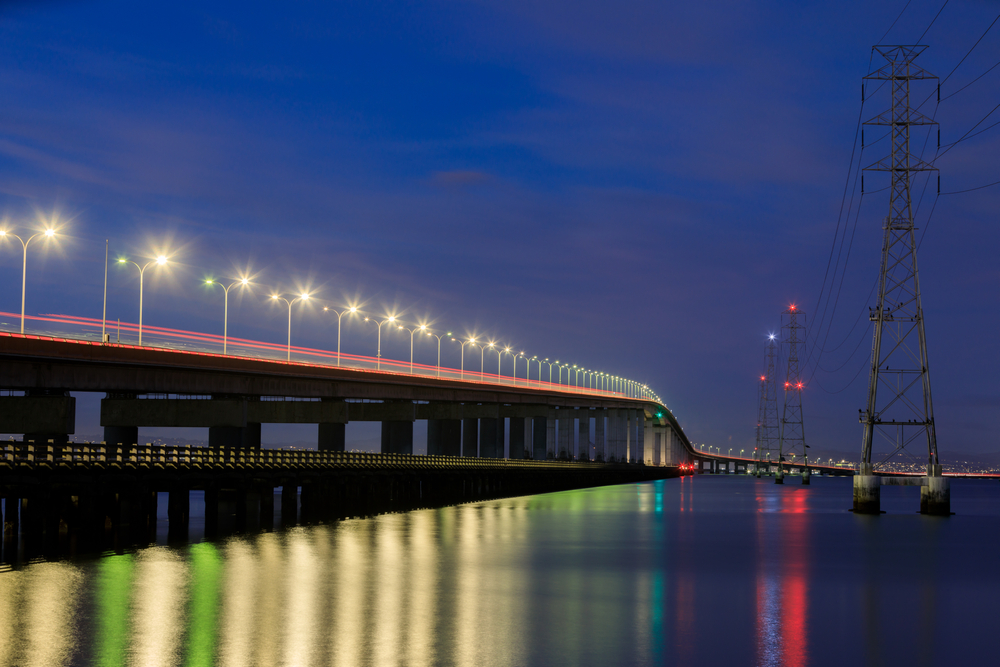Hayward is nestled in California’s East Bay and represents a lively testament to the diversity of the area and its industrial history, as well as ongoing changes happening within it. This city of over 160,000 people has silently become an opportunity-rich, culture-rich, and community-rich place that often gets overlooked in favor of more famous neighbors such as Oakland or San Francisco.
In this article, we explore some aspects of Hayward that make it “The Heart of the Bay,” which have attracted investors, families, and professionals.
Demographics: California’s Diversity in a Nutshell
Hayward, with a population of approximately 165,000 people according to 2024 US Census Bureau estimates, is one of the larger cities in Alameda County. The most remarkable thing about Hayward is its incomprehensible variety, which has made it one of many other diverse cities found across the state.
This variety can be seen from its composition: Hispanics constitute around 40 percent; Asians are almost 25 percent; Whites take up nearly 20; African Americans account for nearly ten percent, while others occupy not more than five percent. It is worth mentioning again that this diversity cannot be just reduced to figures since it can be experienced through multilingual communities, vibrant cultural events, and diverse culinary scenes.
Hayward’s age structure exhibits a slightly younger than average American population, with the median age approximated at 35 years. The rise in the number of young families and professionals attracted by affordable housing and close proximity to job centers is proof of this youthful energy.
Frequently Asked Questions
Is Hayward a good place for young professionals?
Yes, Hayward is increasingly attracting young professionals due to its moderate climate, diverse population, and proximity to job centers throughout the Bay Area.
How are the schools in Hayward improving?
The district has implemented various programs, such as, but not limited to, STEM and dual language immersion, aimed at improving education. Although there are still some challenges, a strong commitment to continuing improvement can be seen.
What’s the commute like from Hayward to San Francisco or Silicon Valley?
Hayward’s central location, together with two BART stations, makes it possible for one to commute. While by BART it takes around 40 minutes to downtown San Francisco, driving time from Silicon Valley varies between 30 and 60 minutes, depending on traffic volumes.
Is Hayward culturally diverse?
That’s correct. With large Hispanic, Asian, and African American populations, this remarkably diverse city in California is ranked among the top.
What are some upcoming developments in Hayward?
Hayward currently focuses on development oriented along transit corridors, such as near its BART stations. Efforts continue to be made towards revitalizing downtown through mixed-use projects that include housing units, retail spaces, and office blocks.

Housing Availability: Blend between affordability and differentiation
Contrary to other areas with exorbitant housing prices, Hayward offers reasonable prices within a reachable range. Although not cheap at national scales, homes in this city go for relatively inexpensive values when compared to those in other parts around the Bay Area, hence offering options for potential buyers who lack sufficient purchasing power.
As per data available until 2024, the price of a house in Hayward is about $800,000, which is much lower than what other cities surrounding it have to offer. The homes for residency come in different types and sizes, from postwar bungalow units to modern condos, as well as large single-family houses on the hillsides.
There are plenty of rental properties available in Hayward, including apartments, duplexes, and single-family homes. An average rent for a one-bedroom apartment usually ranges from around $2,000, while bigger units or houses could go between $2,500 and $3,500 or above.
In order to meet the housing demands, particularly in the downtown and train station districts, there are currently multiple mixed-use developments in progress. These projects aim at providing more housing alternatives that revive urban spaces and enhance walkability.
Work Opportunities: Industry and Innovation
Hayward’s economy reflects its historical industrial background with a current twist. Although manufacturing still contributes greatly to its growth rates, health care, education, and technology are some of the sectors by which Hayward has broadened its employment structure over time.
Among the major employers in town is California State University East Bay, which provides not only jobs but also students who live there, thus boosting the local economy too. Besides this industrial orientation that is seen through such facilities as PepsiCo. and Shasta, healthcare is highlighted by the presence of St. Rose Hospital coupled with Kaiser Permanente, together with new entrants into this sector associated with biotechnology and clean energy attracted by the city’s investment-friendly policies combined with the availability of fallow factories within this part of Alameda County.
Hayward’s extremely central location works greatly for those who commute. Two BART stations and easy access to major freeways mean that residents can get to work centers in San Francisco, Oakland or Silicon Valley within a reasonable time.
Shopping and Dining: From Global Flavors to Local Treasures
Hayward’s dining scene is a direct reflection of its diverse population. The city is an unheralded mecca for foodies craving the real deal in ethnic cuisine. In downtown Hayward, there are some hole-in-the-wall taquerias dishing out mouthwatering street tacos, as well as Vietnamese pho restaurants run by families that can compete with any restaurant in the Bay Area.
Southland Mall, on the other hand, serves as the city’s primary shopping center and provides a mix of national retailers and local stores. But these smaller business districts are what give Hayward its true character. The B Street area in downtown Hayward has seen something of a rebirth with boutique shops, cafes, and a popular Saturday farmers market.
The oldest Japanese garden in California, designed along traditional lines, called the Hayward Japanese Gardens, offers tranquility for spiritual contemplation while bearing witness to this town’s commitment to conserving cultural heritage amidst rapid urbanization.
School Systems: Investing in the Future
Education in Hayward has been through ups and downs. A majority of the city falls under the Hayward Unified School District, which runs several elementary schools, middle schools, and high schools. Yet, despite some historical challenges it faced, recent times have witnessed collective endeavors aimed at improving academic performance coupled with expansion programs.
There is also extensive availability of Advanced Placement classes and career technical education offerings at both Hayward High School and Mt. Eden High School, which constitute two main public high schools within the city limits. The district also offers innovative programs like dual language immersion and STEM-focused curricula that better align students’ skills for future careers.
Higher education benefits significantly from California State University East Bay, situated in the Hayward hills. The university is not only an academic institution but also impacts the lives of city residents through public events, lectures, and community partnerships.
Chabot College, another public community college, gives local students a chance to obtain higher education and training for vocational jobs.
Recreational Activities: From Urban Parks to Hill Hikes
Geographically, Hayward offers its residents various recreational opportunities. The Hayward Regional Shoreline, which features miles of bay trails, is popular among walkers, joggers, and bird watchers. Adjacent to it is the San Lorenzo Creek Trail, which serves as a greenbelt through the city’s heart.
For more adventurous people, Garin Regional Park, situated in the eastern hills, provides hiking trails with panoramic views of the entire Bay Area combined. The Apple Festival takes place there every year, commemorating the location’s agricultural heritage.
The City of Hayward runs many parks and recreation centers, including Kennedy Park, which has an animal petting zoo, miniature train rides, and a seasonal swimming pool. The Hayward Area Recreation and Park District (HARD) has programs suitable for all age brackets, ranging from junior sports to senior activities.
Hayward’s cultural entertainment is imperative for community life. As a tribute to its music heritage, every year the Russell City Blues Festival takes place, and in addition, the Hayward Zucchini Festival has become a unique local custom. The Sun Gallery and the Hayward Arts Council support regional artists and display exhibitions throughout the calendar year.

Crime: Challenges And Progress
Like many other urban communities, crime is a problem in Hayward, but there are indications that things are improving. In order to deter crime in society, the city has embarked on ‘community policing’ and also invested in youth programs.
Though property crimes still persist, violence against people has declined over the past 10 years. To enhance public safety, the Hayward Police Department has focused on building more robust relationships with the community as well as implementing more advanced technology.
It is important to note that neighborhoods may vary greatly in their crime rates. Areas close to downtown or BART stations tend to have high incidents, while hilly areas typically have low rates of criminal activity.
Climate: Mediterranean Comfort With A Bay Breeze
Hayward experiences a Mediterranean climate marked by hot, dry summers and mild, wet winters. This moderate San Francisco Bay eastern shore location prevents temperature changes that would cause extreme weather conditions, resulting in comfortable weather all through the year.
In summer, temperatures range between mid-60s and low 80s Fahrenheit, with occasional heat waves pushing temperatures into the 90s. Winters are cool, with daytime highs ranging within the fifties and sixties and nighttime lows hardly ever going below 40°F.
The mean annual rainfall for this city is about 18 inches, with the most precipitation occurring from November through April. During the morning hours, fog can be seen, with an increased occurrence during the summer; however, it disappears by noon.
Microclimates exist owing to the location of Hayward in the East Bay. Flatter areas closer to the bay are colder and windier, while warmer temperatures and more sunshine are often experienced on higher ground.
Find Your Home in the Heart of the East Bay
Hayward is the very heart of the Bay area, with its diversity, strategic position, and continuing growth being emblematic in this sense. This combination of urban amenities with suburban comforts, yet at a price increasingly unaffordable in the entire Bay Area, has made Hayward unique.
It offers global cuisines as well as multicultural neighborhoods that are committed to education and green spaces, hence a quality life for new residents and businesses coming here. Whether you want an affordable way into the Hayward section of the San Francisco housing market as a young professional, seek good schools and community programs as a family, or are attracted to the city’s business environment because you are an entrepreneur, there is something for everyone.
If you have thought about whether to make Hayward your residential or investment target, come check out what Realoq has to offer regarding properties. We provide listings for homes, in Hayward, ranging from beautiful downtown condos to big family houses in the hills.
This is where California’s history intertwines itself with its future; accepted diversities can be seen here while opportunities flow like tap water. Learn why, indeed, one could say that the heart of the bay is located in Hayward. Let Realoq assist you in finding your next home in this ever-dynamic town.



